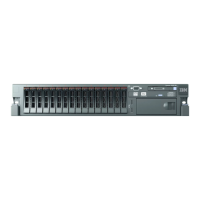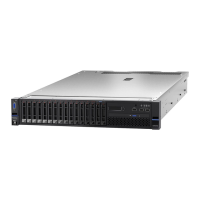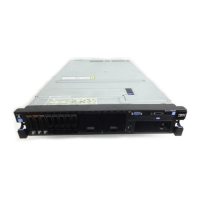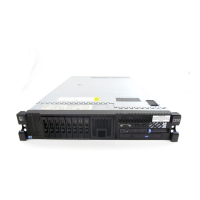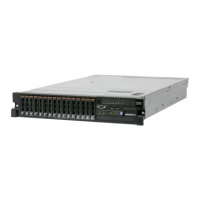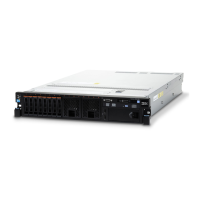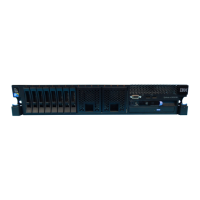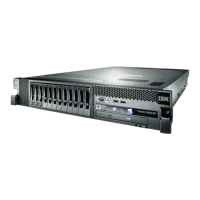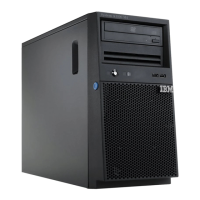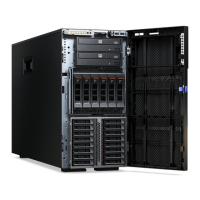Microprocessor
Alignment marks
Notches
Vacuum tool
7. Open the microprocessor release latch to the fully-open position.
8. Open the microprocessor bracket frame.
9. Using the vacuum tool that comes with the replacement microprocessor,
carefully remove the microprocessor.
10. If you are instructed to return the microprocessor, follow all packaging
instructions, and use any packaging materials for shipping that are supplied to
you.
Installing a microprocessor
For information about the type of microprocessor that the server supports and other
information that you must consider when installing a microprocessor, see the User’s
Guide on the IBM System x Documentation CD.
Read the documentation that comes with the microprocessor to determine whether
you must update the basic input/output system (BIOS) code. To download the most
current level of BIOS code, go to http://www.ibm.com/servers/eserver/support/
xseries/index.html,
select System x3650 from the Hardware list, and click the
Download tab.
Attention:
v A startup (boot) microprocessor must always be installed in microprocessor
connector 1 on the system board.
v To ensure correct server operation when you install an additional microprocessor,
use microprocessors that have the same cache size and type, and the same
clock speed. Microprocessor internal and external clock frequencies must be
identical.
v If you are installing a microprocessor that has been removed, make sure that it is
paired with its original heat sink or a new replacement heat sink. Do not reuse a
heat sink from another microprocessor; the thermal grease distribution might be
different and might affect conductivity.
To install a new or replacement microprocessor, complete the following steps. The
following illustration shows how to install microprocessor 2 on the system board. A
VRM is required only if microprocessor 2 is installed.
Chapter 4. Removing and replacing server components 135
